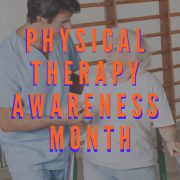Harnessing the Power of Telehealth for Physical Therapy
A couple of weeks ago, UStep participated in an important webinar with our friends at VirtualKare on Parkinson’s and Fall Prevention during Covid-19. The highly-instructive webinar featured an important conversation with patients, caregivers, physical therapists, and other professionals in the Parkinson’s community. 
It was an honor to be part of this amazing panel of experts, including Dr. Pinky Agarwal, a neurologist who specializes in Parkinson’s, and Jay Berger, a physical therapist and co-founder of Virtual Kare. Each member of the panel has over 20 years of experience helping Parkinson’s patients with mobility and fall prevention.
We have gotten some tips on Telehealth for Physical Therapy from the therapists at Virtual Kare, who offer a few insights on the benefits of scheduling and maintaining physical therapy appointments online.
Telehealth
It’s the new buzzword and preferred healthcare delivery system during these corona times. Physical therapy is no exception. While it may seem counterintuitive, teletherapy is proving to be a very viable and safe, socially-distant, and germ-free option with good care.
Benefits of at-home therapy
Therapists are providing quality care online, and many clients are reporting that they actually prefer this option to in-person visits.
Here are five reasons why clients enjoy teletherapy:
- No travel or waiting room time.
- Therapy sessions are more concentrated and have less distraction.
- The therapist is totally focused on educating, demonstrating, and correcting treatment.
- With an interior view of the home environment, the therapist can suggest equipment and make recommendations for home modifications remotely.
- Therapists can teach hands-on care to clients and their caregivers.
While some forms of Physical Therapy such as manual therapy and ultrasound require in-person treatment, there is still so much that can be done online. Your Physical Therapist will make an assessment based on your individual needs, and recommend whether telehealth will work for you.
What to expect
Online PT sessions are just like Facetime or Facebook video chats, except they are held over a secure connection to ensure privacy. For those who may feel uncomfortable with the technology and need to learn how to go online and connect for care, your therapist can walk you through a few easy-to-follow steps.
Once you try it, you’ll find that teletherapy sessions are as easy and personable as those in the clinic.
We at InStep mobility have always seen Physical Therapists as our natural allies and partners in preventing falls and helping clients stay safe, mobile, and active. A physical therapist should be able to talk with you via a video call whether a UStep or one of our other mobility products is right for you at this time. We are also happy to speak to you with healthy social distancing but “face to face” about our products and features, how to acquire coverage or any other questions that you may have.
For more on the topic of telehealth, see our June blog, “Taking Care in the Days of Telehealth.”












